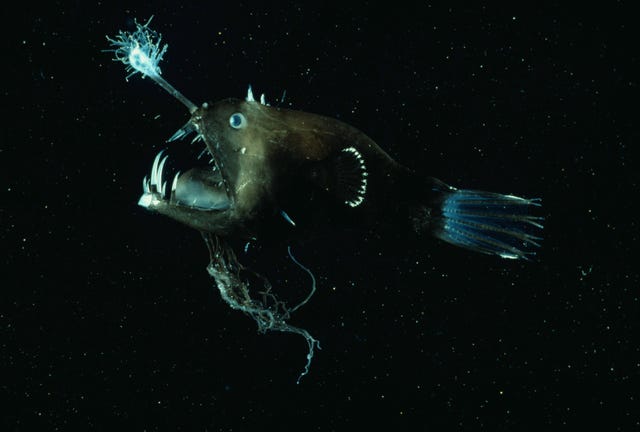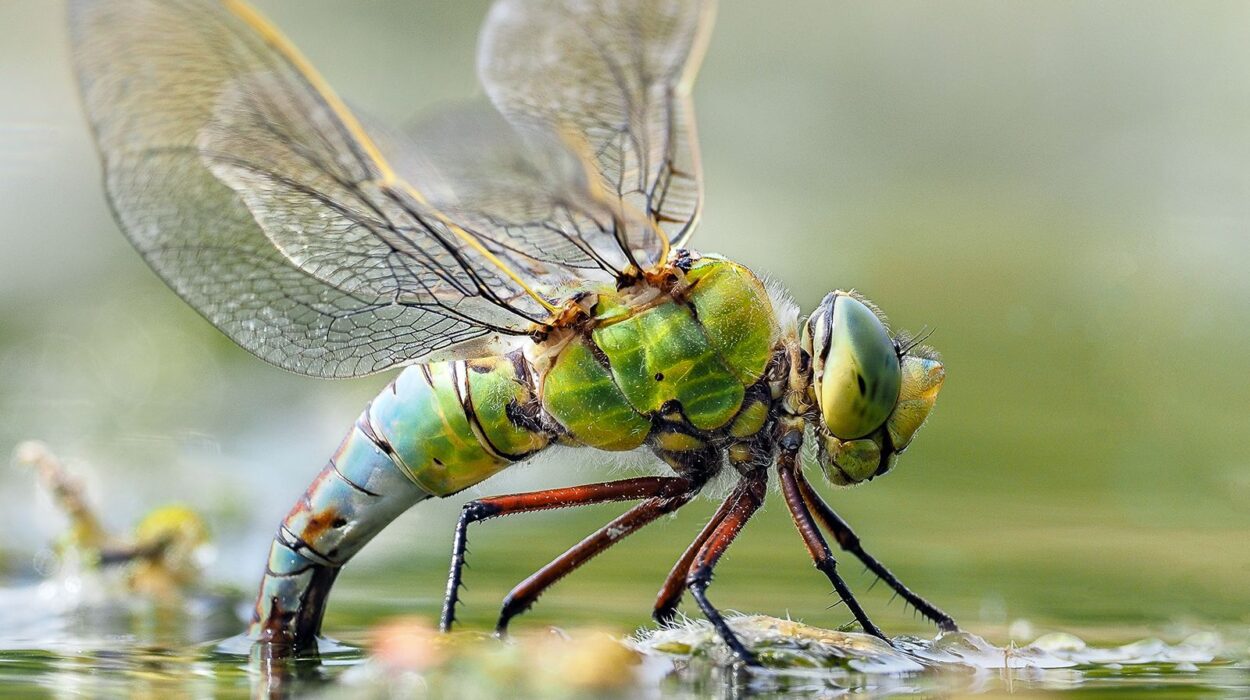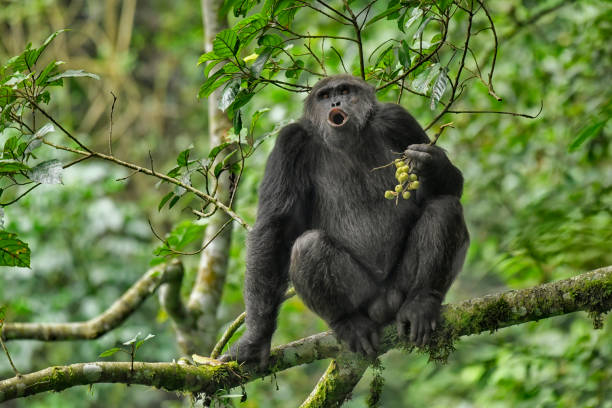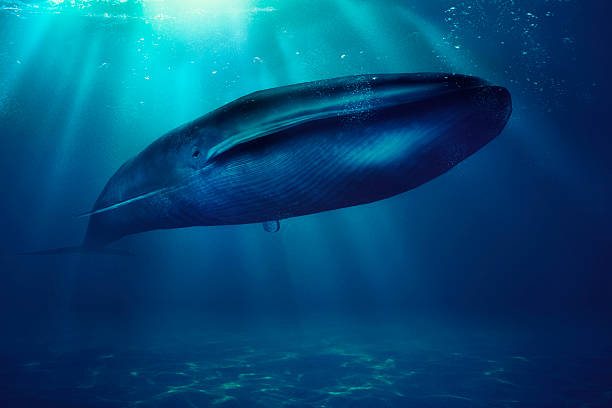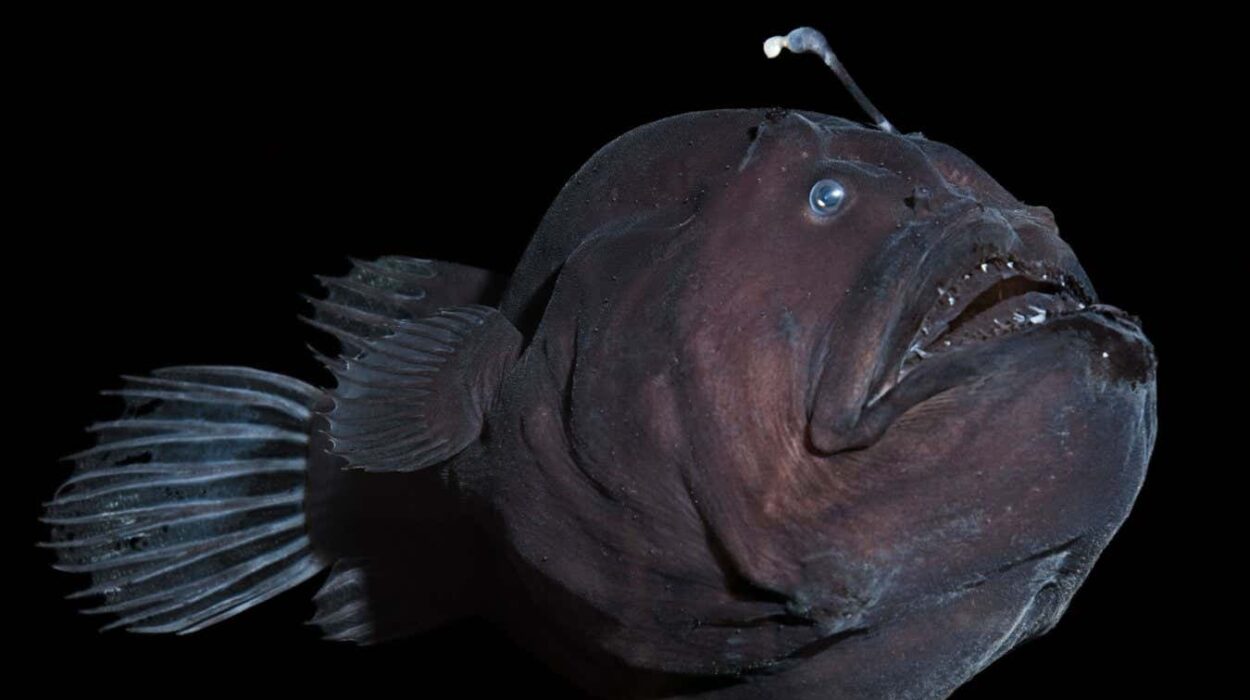Beneath the glittering surface of Earth’s oceans lies a realm so vast, mysterious, and otherworldly that it rivals the imagination of science fiction. It is a world of perpetual darkness, bone-crushing pressure, and chilling cold, yet it teems with life—life so strange, so adapted to extremes, that it seems alien in every sense of the word. This is the deep ocean, a place scientists often call the final frontier on Earth.
The deep ocean covers more than 60 percent of our planet’s surface, yet we have explored less than 5 percent of it. It is the largest habitat on Earth and remains the least known. In this remote and hostile environment, sunlight cannot reach, temperatures hover near freezing, and pressures increase to over a thousand times that of the atmosphere at sea level. Despite these challenges, life flourishes in extraordinary and unexpected ways. From glowing jellyfish and transparent fish to giant tube worms that live near volcanic vents, the creatures of the abyss have evolved remarkable adaptations that allow them to survive where few others can.
Understanding this hidden world not only satisfies our curiosity about the unknown but also provides insight into the limits of life, the origins of biology, and even the search for extraterrestrial life on distant planets. The deep ocean, in many ways, is Earth’s own alien world—a place of wonder, danger, and endless discovery.
The Depths of the Ocean: Layers of Darkness
To understand the world of deep-sea creatures, it is essential to grasp the structure of the ocean itself. The ocean is not a uniform body of water; it is divided into distinct layers, each defined by its depth, temperature, and light conditions. The uppermost layer, known as the epipelagic or sunlight zone, extends from the surface to about 200 meters. It is where most marine life exists and where photosynthesis can occur.
Beneath this, from 200 to 1,000 meters, lies the mesopelagic or twilight zone. Here, light begins to fade, creating a dim, ghostly environment. Below that, from 1,000 to 4,000 meters, is the bathypelagic or midnight zone—a place of complete darkness, where only the light generated by living organisms, called bioluminescence, pierces the blackness.
Even deeper is the abyssopelagic zone, stretching from 4,000 to 6,000 meters, a region of near-freezing temperatures and immense pressure. Below this lies the hadal zone, encompassing the ocean trenches that plunge beyond 6,000 meters. The deepest known point in the ocean, the Challenger Deep in the Mariana Trench, lies nearly 11,000 meters below the surface—deeper than Mount Everest is tall.
Each of these layers presents unique environmental challenges and has shaped the evolution of its inhabitants. Life in the deep ocean is not uniform but highly specialized, with each species finely tuned to its narrow ecological niche.
Life Without Light
Sunlight fuels nearly all life on Earth, but in the deep ocean, it disappears entirely beyond the twilight zone. Without sunlight, photosynthesis cannot occur, which means that deep-sea ecosystems must rely on other sources of energy. Most deep-ocean organisms depend on organic matter that drifts down from the surface—a slow, continuous rain of dead plankton, fecal pellets, and detritus known as “marine snow.”
This marine snow forms the foundation of the deep-sea food web. It sustains countless small organisms that, in turn, are eaten by larger predators. But marine snow alone cannot explain all the abundance found in the deep. Some of the most remarkable discoveries in modern marine biology have revealed entire ecosystems that exist independently of sunlight.
Hydrothermal Vents: Oases in the Abyss
In 1977, a team of scientists exploring the Galápagos Rift discovered something astonishing—hydrothermal vents, cracks in the seafloor that spew superheated, mineral-rich water from beneath the Earth’s crust. Around these vents, they found dense communities of life—giant clams, tube worms, shrimp, and crabs—thriving in complete darkness.
These creatures were not relying on photosynthesis but on a process called chemosynthesis. Instead of sunlight, bacteria near the vents used hydrogen sulfide, a toxic gas emitted from the Earth’s interior, as an energy source to produce organic matter. These chemosynthetic bacteria form the base of a food web that supports complex communities in one of the most extreme environments on Earth.
Giant tube worms (Riftia pachyptila), some exceeding two meters in length, are among the most iconic inhabitants of hydrothermal vents. They have no mouth or digestive system; instead, they host symbiotic bacteria within their bodies that convert chemicals from the vent water into nutrients. This partnership between animal and microbe is one of the most extraordinary examples of adaptation and cooperation in the natural world.
Hydrothermal vent ecosystems have reshaped our understanding of life’s potential. They demonstrate that sunlight is not the only source of energy capable of sustaining ecosystems. This discovery has profound implications for astrobiology, suggesting that life could exist elsewhere in the universe—in the dark oceans beneath the icy crusts of moons like Europa or Enceladus.
The Midnight Zone: A World of Darkness and Light
Descending into the midnight zone is like entering an alien world. Temperatures hover around 2 to 4 degrees Celsius, and the pressure is immense—hundreds of times greater than at the surface. Yet, despite these conditions, this zone is home to an astonishing array of life forms.
In this perpetual darkness, light takes on new meaning. Many deep-sea organisms have evolved the ability to produce their own light through bioluminescence—a chemical reaction involving luciferin (a light-producing molecule) and luciferase (an enzyme). The resulting glow can be blue, green, or even red, depending on the species.
Bioluminescence serves many purposes in the deep sea. Some creatures use it to attract prey, others to lure mates, and some to confuse predators. The anglerfish, perhaps the most famous deep-sea predator, uses a glowing lure that dangles from a rod-like extension on its head to attract unsuspecting prey in the darkness. The flashlight fish has glowing patches beneath its eyes that it can turn on and off, while the hatchetfish uses counter-illumination—producing light from its underside to blend in with the faint light from above, rendering it nearly invisible to predators below.
In the midnight zone, vision has evolved in remarkable ways. Some species have enormous eyes adapted to capture the faintest glimmer of light, while others are completely blind, relying instead on vibrations, pressure changes, or chemical signals to navigate.
The Abyssal Plains: The Largest Habitat on Earth
Stretching between 4,000 and 6,000 meters deep, the abyssal plains are among the most extensive and least explored regions of the planet. These vast, flat expanses cover more than half of the Earth’s surface, yet they remain largely hidden from human eyes. The environment here is cold, dark, and stable, with little seasonal variation.
The creatures that live on the abyssal floor are slow-moving and energy-efficient, adapted to a world of scarcity. Many are scavengers, feeding on the remains of dead animals that drift down from the upper layers. Others, such as sea cucumbers, brittle stars, and giant isopods, roam the sediment-covered plains in search of food.
Some abyssal species, like the dumbo octopus (Grimpoteuthis), seem almost whimsical in appearance, with fins resembling elephant ears that help them glide gracefully through the water. Others, like the giant amphipod and the abyssal grenadier, appear ghostly pale, their bodies adapted to the low-light environment.
Even in this seemingly barren realm, bursts of life occur. When a whale dies and its body sinks to the seafloor—a phenomenon known as a “whale fall”—it creates a temporary oasis of abundance. Scavengers arrive first to strip the flesh, followed by worms and bacteria that feed on the remaining organic matter, creating a unique ecosystem that can last for decades.
The Hadal Zone: The Deepest Trenches
Below the abyss lies the hadal zone, named after Hades, the Greek god of the underworld. This region includes the ocean trenches, which can plunge more than 10,000 meters deep. The pressure here is almost unimaginable—over 1,000 times that at sea level—and the temperature hovers near freezing. Yet even here, life persists.
Microbes have been found thriving in the sediments of the deepest trenches, and larger organisms such as amphipods, snailfish, and sea cucumbers have been observed by deep-diving submersibles. The Mariana snailfish, discovered at a depth of around 8,000 meters, holds the record for the deepest-living fish ever found. Its gelatinous body, flexible bones, and specialized cell membranes allow it to survive under extreme pressure that would crush most other forms of life.
Exploration of the hadal zone remains extremely challenging due to the technological difficulties of operating under such immense pressure. However, advances in robotics and submersible design are opening new frontiers of discovery, revealing that life can thrive even in the most forbidding environments on Earth.
Adaptations to an Extreme Environment
Survival in the deep ocean requires extraordinary adaptations. The pressure at great depths would crush most terrestrial organisms, yet deep-sea creatures have evolved unique physical and biochemical traits to withstand it. Their bodies often lack air-filled cavities such as swim bladders, and their cell membranes and proteins are specially structured to remain stable under pressure.
Because food is scarce, many deep-sea species have slow metabolisms and can survive long periods without eating. Some, like the gulper eel, have enormous mouths and expandable stomachs, allowing them to consume prey much larger than themselves when the opportunity arises.
Reproduction also poses challenges in the vast, sparsely populated deep ocean. Many species have developed specialized strategies to ensure mating success. The anglerfish, for instance, has one of the most bizarre reproductive systems in nature: in some species, the much smaller male fuses permanently to the female’s body, becoming little more than a parasitic appendage that provides sperm when needed.
Camouflage and deception are common survival strategies. Transparent bodies, reflective scales, and bioluminescent displays help animals evade predators or ambush prey. These adaptations showcase the endless creativity of evolution in the face of extreme conditions.
The Microbial Frontier
While the deep sea is famous for its charismatic creatures, its smallest inhabitants—the microbes—are perhaps the most vital. Deep-ocean microbes form the foundation of many ecosystems, driving biochemical cycles that regulate the planet’s chemistry. They play a key role in the global carbon cycle, breaking down organic matter that sinks from the surface and recycling nutrients back into the ocean.
Some deep-sea microbes live within rocks or sediments, surviving on chemical energy alone. Others form symbiotic relationships with larger animals, such as tube worms, mussels, and shrimp near hydrothermal vents. These microorganisms provide their hosts with nutrients, illustrating the interconnectedness of life even in the darkest depths.
Studying these microbes not only enhances our understanding of marine ecology but also holds potential for biotechnology. Enzymes from deep-sea bacteria, which function under extreme pressure and temperature, are being studied for industrial and medical applications. The deep ocean thus represents a vast, largely untapped reservoir of biological and chemical diversity.
Bioluminescence: Nature’s Living Light
One of the most enchanting and mysterious features of deep-sea life is bioluminescence. This natural light production is widespread in the deep ocean, where up to 90 percent of species are thought to produce some form of light.
The chemistry of bioluminescence involves the oxidation of a molecule called luciferin, catalyzed by an enzyme called luciferase, resulting in the release of light without heat. Different species use this ability for different purposes. Predators use it to lure or detect prey; prey use it to startle or escape from predators; some species even use it as a means of communication.
Bioluminescent displays can be subtle glows or brilliant flashes that illuminate the water like underwater fireworks. In some regions, such as the open ocean at night, massive blooms of planktonic organisms can create glowing waves visible from ships or even from space. These living lights remind us of how dynamic and alive the oceans truly are, even in their darkest depths.
Human Exploration of the Deep
Exploring the deep ocean has always been a daunting challenge. The immense pressure, darkness, and cold make it one of the most inaccessible environments on Earth. Yet, over the past century, technological innovation has allowed scientists to gradually unveil its secrets.
The first humans to reach the bottom of the Mariana Trench were Don Walsh and Jacques Piccard aboard the Trieste in 1960. More than fifty years later, filmmaker and explorer James Cameron descended solo to the same depths in the Deepsea Challenger. In recent years, remotely operated vehicles (ROVs) and autonomous underwater vehicles (AUVs) have revolutionized ocean exploration, capturing high-definition images, collecting samples, and discovering new species.
Despite these advances, the deep ocean remains largely unexplored. It is estimated that millions of species still await discovery, and each expedition reveals organisms never before seen by science. The deep sea is a living archive of evolution, preserving lineages that have survived for millions of years.
The Deep Ocean and Climate Regulation
The deep ocean plays a crucial role in regulating Earth’s climate. It acts as a massive reservoir of carbon, storing vast amounts of carbon dioxide absorbed from the atmosphere. Through a process known as the biological carbon pump, carbon from surface organisms sinks to the deep sea when they die, where it can remain trapped for centuries.
Deep ocean currents also influence global climate patterns by redistributing heat around the planet. Understanding how these currents function and how they may change under global warming is essential for predicting future climate scenarios.
However, human activities threaten the delicate balance of deep-sea ecosystems. Deep-sea mining, plastic pollution, and climate-induced changes in ocean chemistry pose serious risks to these fragile habitats. The deep ocean, once thought to be untouched by human influence, is increasingly showing signs of stress.
The Search for Life Beyond Earth
The discovery of thriving ecosystems around hydrothermal vents has revolutionized our understanding of where and how life can exist. These findings suggest that life might also exist on other worlds with similar conditions.
Moons such as Europa (orbiting Jupiter) and Enceladus (orbiting Saturn) have subsurface oceans beneath icy crusts. Scientists believe that hydrothermal activity could occur on their ocean floors, providing the energy and chemical ingredients needed for life. Studying the creatures of Earth’s abyss helps astrobiologists develop hypotheses about what alien life might look like and how it might survive.
The deep ocean, in this sense, serves as a natural laboratory for studying life’s adaptability and resilience. It teaches us that life is not fragile but incredibly versatile, capable of thriving in environments once deemed uninhabitable.
The Future of Deep-Sea Research
As our technologies advance, so too does our ability to explore the deep. New autonomous vehicles, improved sensors, and genetic sequencing tools are transforming how we study deep-sea ecosystems. Environmental DNA (eDNA) techniques allow scientists to detect organisms from traces of genetic material left in the water, enabling the discovery of species without direct observation.
Collaborative international efforts, such as the UN Decade of Ocean Science (2021–2030), aim to map and understand the deep ocean more comprehensively. Protecting these ecosystems is also becoming a global priority, as their health is linked to the stability of the entire planet.
The future of deep-sea exploration lies in balance—between discovery and conservation. The creatures of the abyss remind us that even in the harshest conditions, life finds a way, and it is our responsibility to ensure that this alien yet earthly world remains intact for generations to come.
Conclusion
The alien world beneath the ocean is not a distant planet but a hidden realm within our own. It is a place of profound beauty and mystery, where light and darkness intertwine, where evolution has crafted beings so extraordinary that they defy imagination. From glowing jellyfish to giant tube worms, from abyssal fish to microbes that thrive on chemicals instead of sunlight, the deep ocean is a testament to life’s adaptability and ingenuity.
Exploring this vast frontier not only expands our understanding of Earth but also our conception of what life can be. In every flicker of bioluminescence, in every discovery of a new creature, we are reminded that our planet still holds secrets far beyond our imagination. The deep ocean is Earth’s own alien world—a silent, living cosmos beneath the waves, waiting to be understood.
